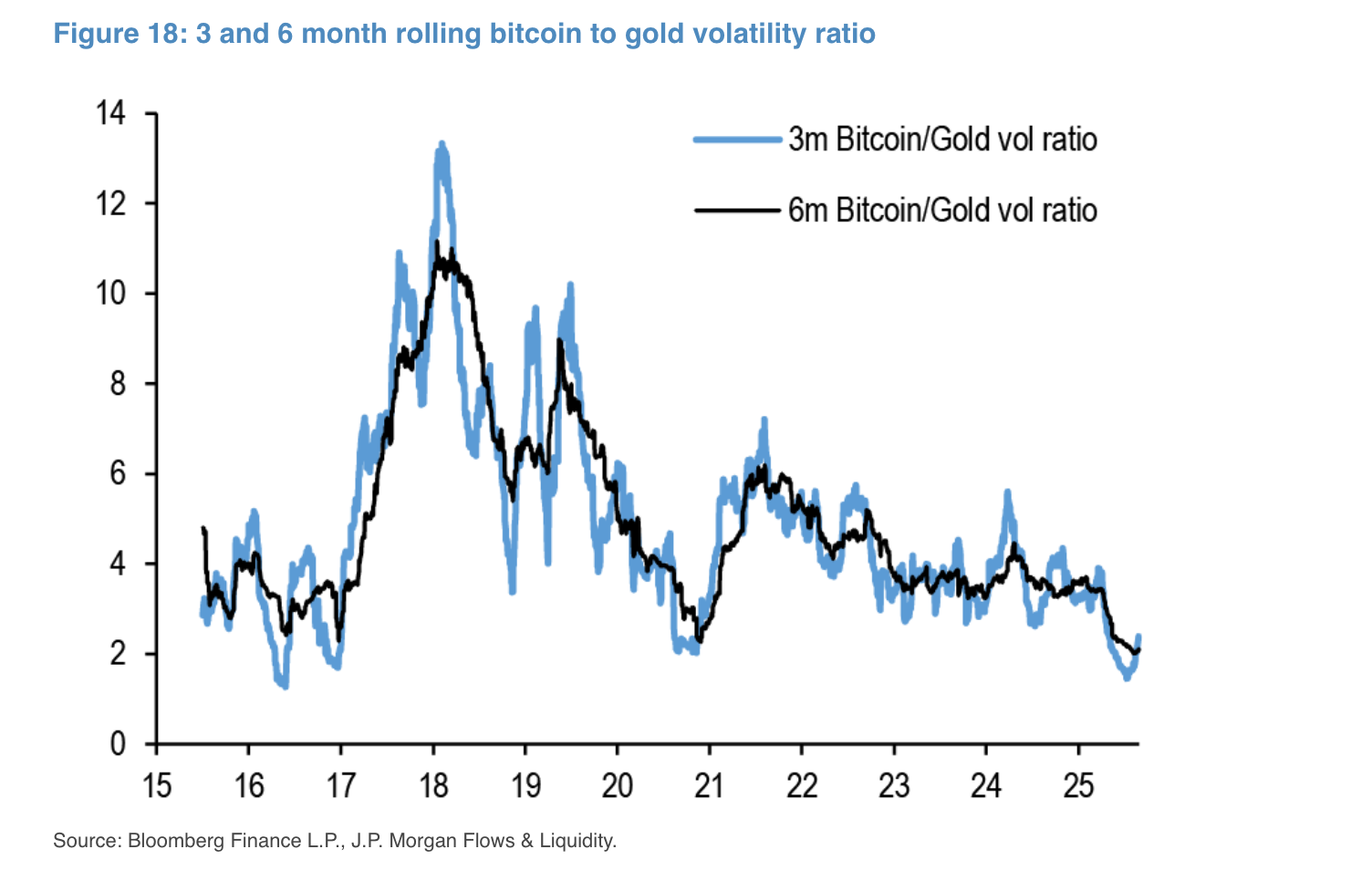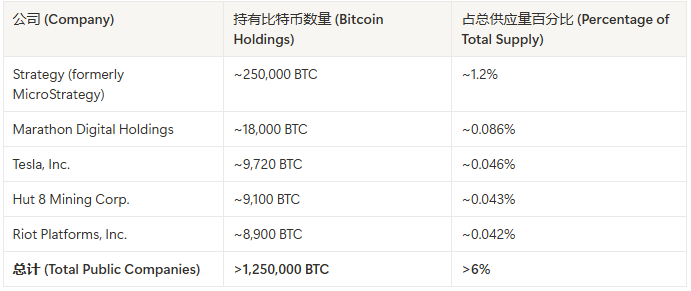Written by: Oliver, Mars Finance
In the financial world, nothing is more dramatic than when the most steadfast skeptics of the past crown the very objects they once scorned. When JPMorgan Chase—a financial empire led by Jamie Dimon, who once dismissed Bitcoin as a "fraud"—released a report pointing to a fair value of $126,000 for Bitcoin, it transcended a simple price prediction. It was more like a signal of a storm: a "revaluation storm" of digital assets originating from the heart of Wall Street is about to unfold.
The true significance of this report lies not in the specific number but in the rigorous valuation framework behind it, entirely based on traditional financial logic. JPMorgan is not discussing grand narratives of belief or technological revolution; instead, they are redefining Bitcoin's position on the global financial chessboard using their preferred language—risk, volatility, asset allocation, and relative value. This marks a transition where Bitcoin is evolving from an alternative asset driven by "stories" to a macro asset that can be priced using "models." At the core of this transformation is the quiet disappearance of Bitcoin's oldest and most daunting characteristic—volatility.
Taming the "Volatility Beast": A Ticket to a Trillion-Dollar Balance Sheet
For a long time, volatility has acted as an invisible chasm, isolating Bitcoin from the trillion-dollar balance sheets of mainstream institutions. For fund managers whose primary task is "capital preservation," an asset with rollercoaster-like price fluctuations is an intolerable "outlier" in their risk models. However, JPMorgan's analysts have keenly observed that this "volatility beast" is being tamed.
Data shows that Bitcoin's six-month rolling volatility has halved from a peak of nearly 60% at the beginning of the year to about 30%, a historical low. This decline is not merely a result of market calm but reflects a structural change. It signifies that the risk gap between Bitcoin and gold—the ultimate safe haven in the traditional world—is narrowing at an unprecedented pace. The volatility ratio between the two has dropped to a historical low of 2.0.

Source: Bloomberg Finance L.P., J.P. Morgan Flows & Liquidity
This "2.0" is the key to understanding the entire report. It communicates to Wall Street in cold numerical language: today, allocating $1 of Bitcoin in your portfolio carries only twice the risk of allocating $1 of gold. In the past, this number might have been five or even ten times. The significant reduction in risk equates to a formal "ticket" for Bitcoin to enter mainstream institutional portfolios. Allocating Bitcoin is shifting from a decision requiring immense courage and a special risk appetite to an option that can be rationally discussed within standard asset allocation models (like the classic 60/40 portfolio).
"Reverse QE": How Corporate Treasuries Become Market "Stabilizers"
What force has stabilized Bitcoin's price volatility? JPMorgan's report shines a spotlight on an emerging yet extremely powerful market force—corporate treasuries. Represented by Michael Saylor of Strategy (formerly MicroStrategy), a movement to convert corporate cash reserves into Bitcoin is quietly unfolding globally.
Some publicly traded companies holding Bitcoin (data as of August 2025, for example)


These companies are purchasing Bitcoin not for short-term speculation but as a long-term strategic reserve against currency devaluation. As Saylor puts it, "Bitcoin is the energy of the digital age, the ultimate solution for balance sheets." This steadfast "buy and hold" strategy has had a profound impact on the market. The Bitcoin absorbed by corporate treasuries is effectively being withdrawn from the active circulating market and placed into a "strategic cold storage."
JPMorgan cleverly likens this process to "Inverse QE." If central bank QE injects liquidity into the market to stabilize the traditional financial system, then the actions of corporate treasuries are withdrawing scarce hard assets from the market with cash, thereby providing an unprecedented "ballast" for the Bitcoin market. Each corporate purchase adds a layer of concrete to Bitcoin's price floor, effectively absorbing market sell-off pressure and systematically reducing its volatility.
Repricing: When "Digital Gold" Meets Risk Parity Models
With volatility tamed and market structure increasingly stable, JPMorgan can finally activate their valuation model to reprice Bitcoin. They employ the "Risk Parity" logic most familiar to institutional investors, directly comparing Bitcoin to gold on a risk-adjusted basis.
This valuation process is clear and powerful: the total scale of gold used for investment in the global private sector is about $5 trillion. Considering Bitcoin's volatility is twice that of gold, under equal risk weighting, Bitcoin's fair market value should be half that of gold, or $2.5 trillion. Based on Bitcoin's current market cap of about $2.2 trillion, to reach this target, its price needs to rise by about 13%, leading to the derived fair value of $126,000.
This model conveys an extremely important signal: Wall Street has officially begun to recognize Bitcoin as "digital gold" within the same analytical framework as traditional asset classes like gold, bonds, and stocks.
The success of spot Bitcoin ETFs provides the most direct real-world footnote to this theoretical revaluation of value. According to data from Bespoke Investment Group, the assets under management (AUM) of Bitcoin funds have surged to about $150 billion, just $30 billion shy of the approximately $180 billion scale of gold funds. Bitcoin ETFs, led by BlackRock's IBIT, have attracted a volume of funds in less than a year that can be compared to the decades-old gold ETF giant GLD. This is not merely a flow of funds; it represents an unprecedented capital migration across generations and asset classes. It validates JPMorgan's report regarding institutional adoption and value revaluation with real money.
Conclusion: Is $126,000 the End Point or a New Starting Point?
JPMorgan's report acts like a starting gun, announcing the official commencement of the Bitcoin value revaluation race. It tells the world that after fifteen years of wild growth, Bitcoin is completing its "coming of age," with its value increasingly defined not just by community consensus and market sentiment but by the world's top financial institutions using rigorous models and vast capital.
The decline in volatility, the strategic locking of corporate treasuries, and the influx of massive institutional funds from ETFs—these three forces are intertwining to reshape Bitcoin's DNA, transforming it from a high-risk speculative asset into a strategic asset that can be included in global macro allocations.
Therefore, the figure of $126,000 should perhaps not be viewed as an ultimate price target. It is more like a "phase anchor" based on the current market structure and risk levels. If the wave of corporate adoption continues, if ETF fund inflows maintain momentum, and if Bitcoin achieves further breakthroughs in payment networks and decentralized finance, then the foundational parameters of the valuation model established by JPMorgan today will itself change.
As veteran trader Peter Brandt pointed out, a complete reversal of market sentiment may still require breaking through key technical levels like $117,570. But from a broader perspective, when Wall Street begins systematically repricing it, Bitcoin's journey from the margins to the center may truly be entering the fast lane.
免责声明:本文章仅代表作者个人观点,不代表本平台的立场和观点。本文章仅供信息分享,不构成对任何人的任何投资建议。用户与作者之间的任何争议,与本平台无关。如网页中刊载的文章或图片涉及侵权,请提供相关的权利证明和身份证明发送邮件到support@aicoin.com,本平台相关工作人员将会进行核查。




